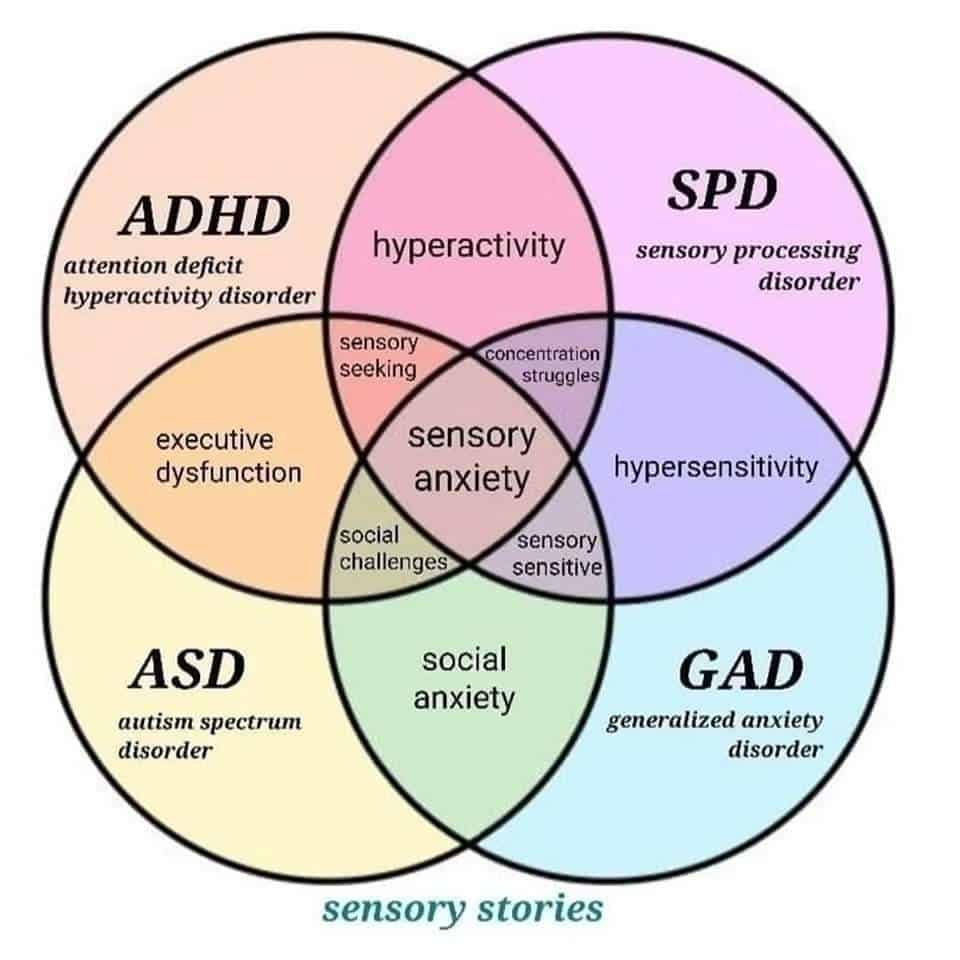ADHD and Sensory Processing Disorder: A Comprehensive Guide for Parents
Hey there, awesome parents! If you’re diving into the world of ADHD and Sensory Processing Disorder (SPD), you’re likely seeking clarity, support, and effective strategies to help your child thrive. You’ve come to the right place! In this comprehensive guide, we’re going to explore everything you need to know about ADHD and SPD – from the basics to the nuances – and wrap it all up in a big, understanding hug of knowledge. Let’s jump in!
What is ADHD?
Attention Deficit Hyperactivity Disorder (ADHD) is a neurodevelopmental condition characterized by patterns of inattention, hyperactivity, and impulsivity that are not developmentally typical for a child’s age. These traits can impact school performance, relationships, and everyday activities.
Understanding Sensory Processing Disorder
Sensory Processing Disorder (SPD) is a condition where the brain has trouble receiving and responding to information that comes in through the senses. This can lead to difficulties in performing countless everyday tasks. Not as widely recognized as ADHD, SPD can profoundly affect a child’s daily life.
The Connection Between ADHD and SPD
While ADHD and SPD are distinct conditions, they can sometimes overlap. Some children with ADHD may also have sensory processing challenges, which means they can be over-responsive or under-responsive to sensory stimuli like sounds, textures, or lights. It’s essential to understand that each child’s experience with these conditions is unique and multidimensional.
Early Signs and Symptoms to Look Out For
As you embark on this journey with your child, knowing what signs to watch for can be a huge help. For ADHD, signs may include difficulty staying focused, frequent forgetfulness, or constant fidgeting. With SPD, you might notice your child struggling with clothing textures, being unusually bothered by noises, or showing extreme responses to physical contact. Pay attention to these cues, as they can be the first step towards getting a proper diagnosis.
Getting a Diagnosis
Let’s talk about the diagnosis dance (and it can feel like a dance, can’t it?). Securing a diagnosis for ADHD and SPD involves various healthcare professionals and often, multidisciplinary assessments. Your pediatrician might be your starting point, and from there, you may be referred to specialists like child psychologists, occupational therapists, or neurologists, to name a few.
Parenting Strategies for Kids with ADHD and SPD
Cue the drumroll, please! You’re about to gain some great practical strategies to support your child. Whether it’s setting up daily routines to provide structure, creating a sensory-friendly environment at home, or finding the right therapeutic activities, each step you take can make a significant difference in your child’s life. Always approach each strategy with patience and an open mind, as trial and adjustment are part of the process.
In the next sections, we’ll go through detailed explanations of strategies, treatments, and therapies that can help manage the symptoms of ADHD and SPD. We’ll also explore the emotional aspect of these conditions and offer tips for building strong, supportive relationships with your child. Remember, you’re not alone in this, and with a little bit of knowledge and a whole lot of love, you’ve got this!
So, stay tuned, supportive parents! Together, let’s journey through understanding, embracing, and celebrating your child’s unique strengths and challenges. Learning about ADHD and SPD is just the beginning, but with each new insight, you’re paving the way for your child’s bright future. Keep your chin up, and let’s get ready to empower both you and your little ones!

Five Things Every Parent Should Know When Preparing for ADHD and SPD
1. Embrace Patience and Flexibility
Understanding ADHD and SPD takes time, and every child is different. Embrace a mindset of patience and flexibility. What works for one child may not work for another, so be prepared to adapt your approach as you learn more about your child’s specific needs.
2. Create a Structured Environment
Children with ADHD and SPD often thrive in environments where there is predictability and routine. Structured schedules, organized living spaces, and clear expectations can help minimize distractions and sensory overload, providing a sense of safety and security.
3. Learn About Sensory Integration
Sensory integration therapy, often provided by an occupational therapist, can be invaluable for children with SPD. Understanding the basics of this therapy can help you create a supportive home environment. Explore different textures, sounds, and activities that can help your child manage their sensory experiences.
4. Build a Support Network
Having a support network is crucial. Connect with other parents of children with ADHD and SPD, join support groups, and seek out professionals who can offer guidance and assistance. Online forums and local communities can be rich sources of support and information.
5. Celebrate Small Wins
It’s essential to celebrate the small victories along the way. Recognize and praise your child’s progress, no matter how small it seems. Acknowledging positive steps helps build self-esteem and encourages your child to keep working towards their goals.
With these five key points in mind, parents can better prepare for the challenges and joys of raising a child with ADHD and SPD. By staying informed, flexible, and proactive, you can provide the care and support your child needs to succeed. The road ahead may be bumpy at times, but it’s also filled with opportunities for growth, learning, and lots of love. Keep on keeping on, you fabulous parents – your dedication makes all the difference in your child’s world!
See more great Things to Do with Kids in New Zealand here. For more information see here
Disclaimer
The articles available via our website provide general information only and we strongly urge readers to exercise caution and conduct their own thorough research and fact-checking. The information presented should not be taken as absolute truth, and, to the maximum extent permitted by law, we will not be held liable for any inaccuracies or errors in the content. It is essential for individuals to independently verify and validate the information before making any decisions or taking any actions based on the articles.




